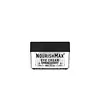What's inside
What's inside
 Key Ingredients
Key Ingredients

No key ingredients
 Benefits
Benefits

 Concerns
Concerns

 Ingredients Side-by-side
Ingredients Side-by-side

Water
Skin ConditioningSimmondsia Chinensis Seed Oil
EmollientPolyacrylamide
C13-14 Isoparaffin
EmollientSqualane
EmollientCaffeine
Skin ConditioningCeramide NP
Skin ConditioningPeucedanum Graveolens Extract
TonicGlycine Soja Oil
EmollientPhytonadione Epoxide
AstringentPrunus Armeniaca Kernel Oil
MaskingSodium Hyaluronate
HumectantRetinol
Skin ConditioningArnica Montana Flower Extract
MaskingPalmitoyl Tetrapeptide-7
Skin ConditioningAcetyl Hexapeptide-8
HumectantSaccharomyces/Copper Ferment
Skin ConditioningSaccharomyces/Silicon Ferment
Skin ConditioningTocopherol
AntioxidantN-Hydroxysuccinimide
Skin ConditioningChrysin
Skin ConditioningPhenoxyethanol
PreservativeGlycerin
HumectantButylene Glycol
HumectantLaureth-7
EmulsifyingEthylhexylglycerin
Skin ConditioningCaprylic/Capric Triglyceride
MaskingPolysorbate 20
EmulsifyingCarbomer
Emulsion StabilisingCetyl Palmitate
EmollientLaureth-23
CleansingPotassium Sorbate
PreservativeTrideceth-6 Phosphate
EmulsifyingTriethanolamine
BufferingSteareth-20
CleansingWater, Simmondsia Chinensis Seed Oil, Polyacrylamide, C13-14 Isoparaffin, Squalane, Caffeine, Ceramide NP, Peucedanum Graveolens Extract, Glycine Soja Oil, Phytonadione Epoxide, Prunus Armeniaca Kernel Oil, Sodium Hyaluronate, Retinol, Arnica Montana Flower Extract, Palmitoyl Tetrapeptide-7, Acetyl Hexapeptide-8, Saccharomyces/Copper Ferment, Saccharomyces/Silicon Ferment, Tocopherol, N-Hydroxysuccinimide, Chrysin, Phenoxyethanol, Glycerin, Butylene Glycol, Laureth-7, Ethylhexylglycerin, Caprylic/Capric Triglyceride, Polysorbate 20, Carbomer, Cetyl Palmitate, Laureth-23, Potassium Sorbate, Trideceth-6 Phosphate, Triethanolamine, Steareth-20
Water
Skin ConditioningGlycerin
HumectantCetearyl Ethylhexanoate
EmollientAlbizia Julibrissin Bark Extract
MaskingDarutoside
Skin ConditioningIsopropyl Myristate
EmollientAcrylates/C10-30 Alkyl Acrylate Crosspolymer
Emulsion StabilisingCarbomer
Emulsion StabilisingCellulose Gum
Emulsion StabilisingSodium Hydroxide
BufferingPhenoxyethanol
PreservativeEthylhexylglycerin
Skin ConditioningSodium Benzoate
MaskingSodium Carbonate
BufferingSodium Chloride
MaskingIngredients Explained
These ingredients are found in both products.
Ingredients higher up in an ingredient list are typically present in a larger amount.
Carbomer is a polymer of acrylic acid. Its main role is to create a gel consistency.
A high amount of carbomer can cause pilling or balling up of products. Don't worry, most products contain 1% or less of carbomer.
Ethylhexylglycerin (we can't pronounce this either) is commonly used as a preservative and skin softener. It is derived from glyceryl.
You might see Ethylhexylglycerin often paired with other preservatives such as phenoxyethanol. Ethylhexylglycerin has been found to increase the effectiveness of these other preservatives.
Glycerin is already naturally found in your skin. It helps moisturize and protect your skin.
A study from 2016 found glycerin to be more effective as a humectant than AHAs and hyaluronic acid.
As a humectant, it helps the skin stay hydrated by pulling moisture to your skin. The low molecular weight of glycerin allows it to pull moisture into the deeper layers of your skin.
Hydrated skin improves your skin barrier; Your skin barrier helps protect against irritants and bacteria.
Glycerin has also been found to have antimicrobial and antiviral properties. Due to these properties, glycerin is often used in wound and burn treatments.
In cosmetics, glycerin is usually derived from plants such as soybean or palm. However, it can also be sourced from animals, such as tallow or animal fat.
This ingredient is organic, colorless, odorless, and non-toxic.
Glycerin is the name for this ingredient in American English. British English uses Glycerol/Glycerine.
Learn more about GlycerinPhenoxyethanol is a preservative that has germicide, antimicrobial, and aromatic properties. Studies show that phenoxyethanol can prevent microbial growth. By itself, it has a scent that is similar to that of a rose.
It's often used in formulations along with Caprylyl Glycol to preserve the shelf life of products.
Water. It's the most common cosmetic ingredient of all. You'll usually see it at the top of ingredient lists, meaning that it makes up the largest part of the product.
So why is it so popular? Water most often acts as a solvent - this means that it helps dissolve other ingredients into the formulation.
You'll also recognize water as that liquid we all need to stay alive. If you see this, drink a glass of water. Stay hydrated!
Learn more about Water